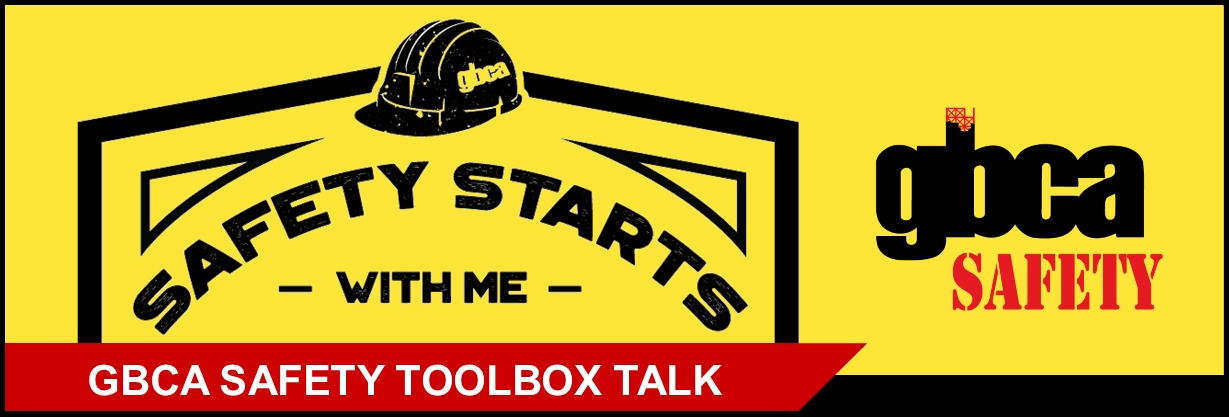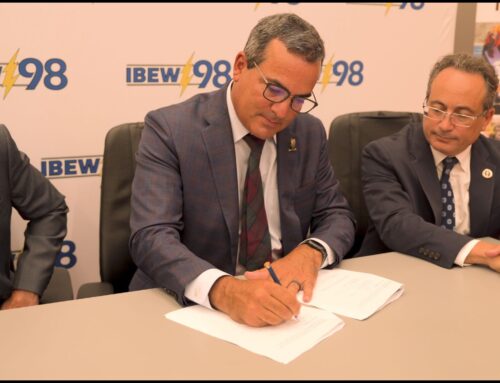This GBCA Safety Toolbox Talk discusses caring for your hard hat. Take care of your hard hat, and it will take care of you! Click below to download the Toolbox Talk as a handout (includes Sign-In Sheet).
Caring for Your Hard Hat
ANSI-approved (Z89.1-2009) hard hats are designed to protect you from the impact of falling objects and, with some classes (Class G and E) from accidental contact with electrical current. However, the way we take care of our hard hats can have a significant impact on how well it does its job.
Here are some practical DOs and DON’Ts on the care and use of your had hat:
DOs
DO ALWAYS ADJUST AND WEAR your hard hat according to the manufacturer’s instructions. Pay attention to the particular brand and model.
DO FOLLOW your employer’s PPE policy regarding hard hats.
DO CLEAN your hard hat as needed, using a mild soap and water, or other cleaning solution recommended by the manufacturer.
DO INSPECT your hard hat shell and suspension for damage and deterioration EVERY DAY before use, as well as after any occurrence that may affect its integrity (such as crushing or being struck by a falling object of significant size.)
DO REPLACE your hard hat shell or suspension when it shows signs of damage or deterioration, and per manufacturers recommendations for replacement. Many hard hats have a 5 year life span (2 years in chemical environments).
DO STORE your hard hat as recommended by the manufacturer. This generally means keeping it out of direct sunlight (e.g.: the back window of your car) as well as avoiding storing in areas of high heat (e.g.: car trunk) while not on the job. Heat and ultraviolet light can weaken or even warp the shell, adversely affecting its protective qualities.
DON’Ts
DON’T PAINT your hard hat. Most manufacturers forbid using paints on hats: they can significantly degrade the strength of the hard hat shell, making it more likely to fail. Paint also makes inspection for damage difficult.
DON’T ALTER OR MODIFY your hard hat. Drilling holes and/or inserting screws or other attachments to the shell of your hard hat weakens the shell, and can also allow electrical current to pass through. Doing this will render your Class E or Class G hard hat a mere Class C (Conductive) hard hat.
DON’T USE SOLVENTS OR CHEMICALS to clean your hard hat. Solvents will compromise the integrity of the hard hat shell.
DON’T WEAR YOUR HARD HAT BACKWARDS unless specifically approved by the manufacturer and sanctioned by your employer and/or client. To see if your hard hat can be worn backwards, look for the “reverse donning” hard hat symbol:

DON’T WEAR A BASEBALL CAP OR KNIT WINTER CAP BENEATH YOUR HARD HAT. Doing so will interfere with the suspension and shell, which work together to reduce the force of impacts. Rather, use a cold-weather hat liner approved by ANSI and the manufacturer.
Remember to record the attendees of your toolbox talk!
Access GBCA’s full library of toolbox talks:





